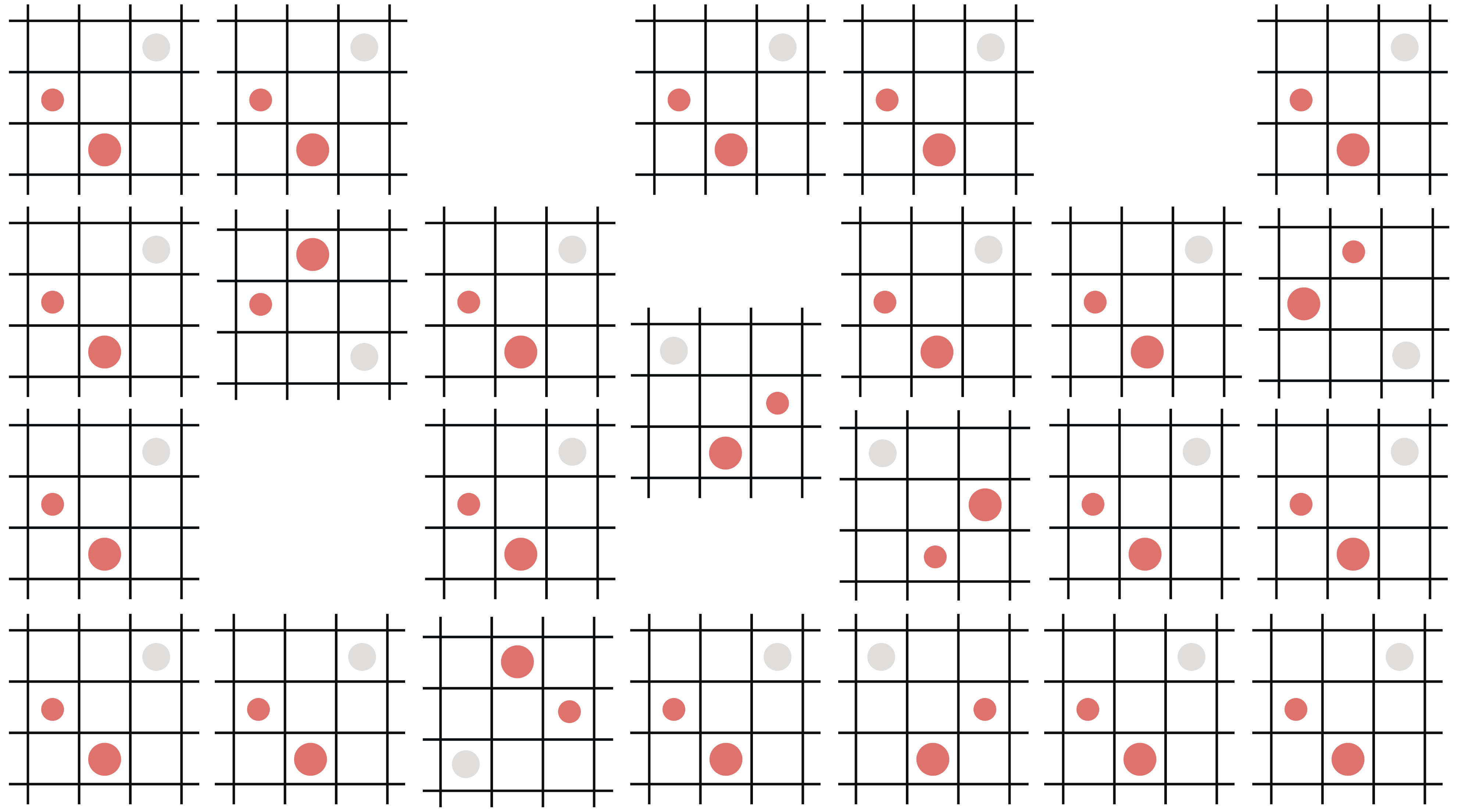5 years in a row: Asana named a Fortune Best Place to Work

We’re proud that for the fifth year in a row, Asana has been named a Best Small & Medium Workplace by Great Place to Work and Fortune. This recognition each year is a testament to all our Asanas who have created a culture of connection and inclusivity that empowers everyone to thrive. Culture is so important at Asana; it’s what fuels our business and drives our innovation.
This recognition is the latest in a number of accolades that our team has been grateful to receive this year from Fortune and Great Place to Work, including being named the #1 Best Workplace in Technology for the second year in a row, the #1 Best Workplace in the Bay Area for the fourth year in a row, and the #1 Best Workplace for Millennials for the second year in a row. We’re honored to be included on the Best Small & Medium Workplaces list for one more year before transitioning into the Large Company category, as a result of our company’s global growth reaching more than 1,000 employees and expanding to 11 offices.
In order to place on the list, companies first have to achieve Great Place to Work Certification, which is a result of survey responses and deep analysis of a company’s culture. From there, Great Place to Work analyzes the survey responses from over 280K employees at Great Place to Work-certified organizations to select who will make the final list.
To give you a peek behind the scenes at what it’s like working at Asana, we’re sharing what the survey data revealed about our company. Find out why we’re an award-winning workplace for the fifth year in a row!
96% of employees at Asana say it is a great place to work
At Asana, we treat our culture like a product. We design and build culture in the same way that we design and build our software, with intentionality and constant iteration based on learnings and employee feedback. We’re committed to ensuring our culture empowers all employees to make an impact and thrive, while scaling it with our global growth and the needs of our business.
“Both the Asana product and the Asana culture are always evolving. We listen to feedback from customers and make product enhancements based on that feedback, while also looking for innovative approaches and ways to enhance our culture. The best cultures and products don’t stay static. They evolve to always become better. That’s how we do it here on #teamasana!”
Chris Juliano, Talent Acquisition, San Francisco
99% of people care about each other at Asana
There are so many factors that affect how we show up to work each day. At Asana, we focus on creating an environment where everyone feels comfortable expressing the parts of themselves that they need in order to thrive. When our teams feel heard, respected, and valued, they can do their best work. We make sure to hold space for conversation with one another, such as our Real Talk event series. These discussions are held in spaces designed to be safe for open, honest, and authentic conversations.
“My teammates bring energy and excitement to their work every single day. All Asanas are passionate about what we’re building and have a shared understanding of the heights that we can reach if we co-create together. Everyone shows up to work with a smile on their face, ready to get to work, and determined to keep building each other up.”
Max Spencer, Sales, San Francisco
99% say when you join Asana, you are made to feel welcome
Our quick shift to remote work last year forced us to rethink how we connect and communicate as a distributed team, and building inclusive communities has been a core part of this shift, including how we onboard new Asanas. We’ve grown significantly as a company, with almost 500 new Asanas joining us remotely from all over the world that have never had the chance to meet or collaborate with their teams in person. We’ve created spaces for our employees to show up in the ways that work for them and to build community together to remain connected and supported no matter where they are.
We have five thriving global Employee Resource Groups (ERGs): Team Rainbow, AsanaWomen, AsanaPac, Blacsana, and Gradient. These communities are a cornerstone of our culture, with the majority of our global employee base belonging to one or more ERGs. In the past year, our ERG communities doubled down on building ways to connect virtually and welcome new people.
Nearly every week, one of our ERGs hosts a virtual event that creates a space for people to safely express themselves and engage in real talk about their experiences. From casual lunches, to discussions on current events, to movie screenings, to game nights, we’ve seen increased engagement from our global employee base through these activities.
We’ve made our ERG communities an even larger focus of our remote employee onboarding program. That way, employees who identify with one of these communities or want to join as an ally have an easy and direct path to getting involved and meeting new people right from the start.
“My team’s support and sense of humor has been essential to getting through the pandemic this year! Building relationships starting remotely is tough, but my team has been incredibly supportive, fun, and collaborative. I’m still so grateful to work with them everyday.”
Reyana Fayyaz, Product, San Francisco
98% of people at Asana feel they are given a lot of responsibility
At Asana, we value co-creation, clarity, and doing great things fast. So our approach to how we organize work distributes responsibility across the team through what we call AoRs, or areas of responsibility.
This approach gives people the freedom they need to contribute at their full potential, while also providing the right structure and support to help people grow and reach their professional and personal goals. Having a highly visible and flexible system allows people to feel ownership over responsibilities from day one at the company, grow into leadership roles, and have a transparent view of company structure and focus areas.
“Asana’s AoR system distributes responsibility across the company and empowers everyone to completely own their areas of work. I have AoRs that apply to my core job responsibilities, but some that go beyond that as well. It’s a great way to collaborate with teams I wouldn’t otherwise work with, and continue to gain new skills and knowledge.”
Eileen Hwang, Marketing, New York
98% feel Asana’s management is honest and ethical in its business practices
At Asana, every employee’s ability to do their most impactful work starts with our leadership team upholding a culture of trust and transparency. As a company, we’re committed to helping humanity thrive and building technology that is a force for positive change. Our mission drives everything we do, because it’s dedicated to serving our customers and empowering them to achieve their missions faster.
In addition, we are advocates for doing the work to build a more equitable and inclusive environment for everyone, even when it is difficult. Across the organization, we continue to ground our efforts in a strategy that centers on building a framework for fostering transparency and trust, creating an environment where everyone at Asana can feel respected, valued, heard—and that they belong.
Our company north star has always been the well-being of our employees and serving our customers. We believe that every member of the team has an important role in building our culture, and in uncertain times, we’ve valued the perspective of our leaders to help guide the way.
“Asana allows me to do my best work by creating a positive, inspiring environment for all employees. Our leadership team cares about mental health and creates a safe space to talk and bring up ideas. This has put me in a good headspace and allowed me to consistently put my best foot forward at work.”
David Kim, Engineering, New York
98% feel Asana’s facilities contribute to a good working environment
As a team, we benefit from the connection and team flow we experience when we’re co-creating in the same space together. We’re focused on creating experiences where teams can thrive, do their best work, and be heard and supported in their decision-making. When we return to in-person collaboration, we’ll benefit from offices that are designed to foster ad-hoc connection and co-creation through inclusive common spaces.
We’re excited about our new headquarters in downtown San Francisco—a 12-floor LEED Gold-certified building. It features relaxing communal spaces, a beautiful new commercial kitchen and dining area, dedicated wellness zones that promote mindfulness, and a rooftop garden that provides outdoor gathering space.
We also have our Culinary Program, focused on providing healthy, locally sourced meals three times a day. Our skilled chefs and nutrition team plan menus around ingredients that keep us energized and working at our highest potential, allowing us to do our best work.
We’re also eager to invite our customers, partners, and extended community to visit our new building and executive briefing center, as we look to inspire more collaboration and innovation for teams.
“Asana as a product is built to maximize focus and flow, so it only makes sense that as a company we maximize focus and flow for all employees at work. In the office, there are so many different spaces to work in—whether you want to collaborate in a big room or hunker down in a dark space for deep focus. However you want to work, Asana supports it. One of my favorite parts about working in the office is taking walking meetings with my colleagues! Especially when I bring my dog into the office, it is a great excuse to go outside, get some fresh air, and brainstorm outside of a conference room.”
Molly Talbert, Marketing, San Francisco
100% of Asanas are excited to hear from you—Join us, we’re hiring!
Every single Asana plays a pivotal role in building, growing, and scaling our culture to meet the needs of the business. We will continue to invest in our purpose-built culture that focuses on collaboration, inclusion, and personal and professional growth. Come be a part of it, we’re hiring!

